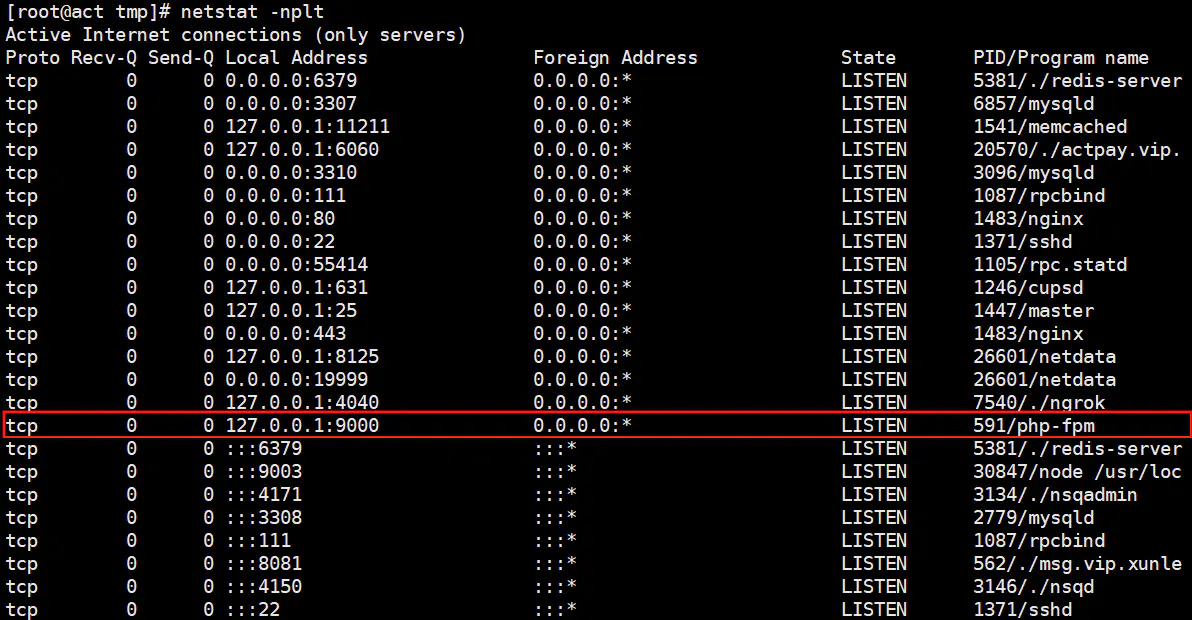 Backend Development
Backend Development
 PHP Tutorial
PHP Tutorial
 A brief discussion on the relationship between PHP-FPM, Nginx and FastCGI
A brief discussion on the relationship between PHP-FPM, Nginx and FastCGI
A brief discussion on the relationship between PHP-FPM, Nginx and FastCGI
This article will talk about the relationship between PHP-FPM, Nginx, and FastCGI, as well as the configuration of Nginx reverse proxy and load balancing. It has certain reference value. Friends in need can refer to it. I hope it will be helpful to everyone.

##The relationship between PHP-FPM, Nginx, FastCGI
FastCGI is a protocol, it It is the bridge connecting applications and WEB servers. Nginx cannot communicate directly with PHP-FPM, but passes the request to PHP-FPM for processing through FastCGI.location ~ \.php$ {
try_files $uri /index.php =404;
fastcgi_pass 127.0.0.1:9000;
fastcgi_index index.php;
fastcgi_buffers 16 16k;
fastcgi_buffer_size 32k;
fastcgi_param SCRIPT_FILENAME $document_root$fastcgi_script_name;
include fastcgi_params;
}
Nginx reverse proxy
The most important instruction of Nginx reverse proxy is proxy_pass, such as:location ^~ /seckill_query/ {
proxy_pass http://ris.filemail.gdrive:8090/;
proxy_set_header Host ris.filemail.gdrive;
}
location ^~ /push_message/ {
proxy_pass http://channel.filemail.gdrive:8090/;
proxy_set_header Host channel.filemail.gdrive;
}
location ^~ /data/ {
proxy_pass http://ds.filemail.gdrive:8087/;
proxy_set_header Host ds.filemail.gdrive;
}Nginx Load Balancing
Introduce the upstream module:The load balancing module is used to download data from "upstream" Select a host from the list of backend hosts defined by the directive. nginx first uses the load balancing module to find a host, and then uses the upstream module to interact with the host.Load balancing configuration:
upstream php-upstream {
ip_hash;
server 192.168.0.1;
server 192.168.0.2;
}
location / {
root html;
index index.html index.htm;
proxy_pass http://php-upstream;
}Load balancing can also be used on fastcgi_pass.
For example:fastcgi_pass http://php-upstream
Question
What is the relationship between reverse proxy and load balancing
The two words reverse proxy and load balancing often appear together, but they are actually different concepts. Load balancing emphasizes more on an algorithm or strategy that will request Distributed to different machines, it actually acts as a reverse proxy.The difference between proxy_pass and fastcgi_pass
One is the reverse proxy module, and the other is forwarded to the factcgi backend for processing.PHP Video Tutorial"
The above is the detailed content of A brief discussion on the relationship between PHP-FPM, Nginx and FastCGI. For more information, please follow other related articles on the PHP Chinese website!

Hot AI Tools

Undresser.AI Undress
AI-powered app for creating realistic nude photos

AI Clothes Remover
Online AI tool for removing clothes from photos.

Undress AI Tool
Undress images for free

Clothoff.io
AI clothes remover

AI Hentai Generator
Generate AI Hentai for free.

Hot Article

Hot Tools

Notepad++7.3.1
Easy-to-use and free code editor

SublimeText3 Chinese version
Chinese version, very easy to use

Zend Studio 13.0.1
Powerful PHP integrated development environment

Dreamweaver CS6
Visual web development tools

SublimeText3 Mac version
God-level code editing software (SublimeText3)

Hot Topics
 1378
1378
 52
52
 How to configure nginx in Windows
Apr 14, 2025 pm 12:57 PM
How to configure nginx in Windows
Apr 14, 2025 pm 12:57 PM
How to configure Nginx in Windows? Install Nginx and create a virtual host configuration. Modify the main configuration file and include the virtual host configuration. Start or reload Nginx. Test the configuration and view the website. Selectively enable SSL and configure SSL certificates. Selectively set the firewall to allow port 80 and 443 traffic.
 How to start nginx in Linux
Apr 14, 2025 pm 12:51 PM
How to start nginx in Linux
Apr 14, 2025 pm 12:51 PM
Steps to start Nginx in Linux: Check whether Nginx is installed. Use systemctl start nginx to start the Nginx service. Use systemctl enable nginx to enable automatic startup of Nginx at system startup. Use systemctl status nginx to verify that the startup is successful. Visit http://localhost in a web browser to view the default welcome page.
 How to check whether nginx is started
Apr 14, 2025 pm 01:03 PM
How to check whether nginx is started
Apr 14, 2025 pm 01:03 PM
How to confirm whether Nginx is started: 1. Use the command line: systemctl status nginx (Linux/Unix), netstat -ano | findstr 80 (Windows); 2. Check whether port 80 is open; 3. Check the Nginx startup message in the system log; 4. Use third-party tools, such as Nagios, Zabbix, and Icinga.
 How to start nginx server
Apr 14, 2025 pm 12:27 PM
How to start nginx server
Apr 14, 2025 pm 12:27 PM
Starting an Nginx server requires different steps according to different operating systems: Linux/Unix system: Install the Nginx package (for example, using apt-get or yum). Use systemctl to start an Nginx service (for example, sudo systemctl start nginx). Windows system: Download and install Windows binary files. Start Nginx using the nginx.exe executable (for example, nginx.exe -c conf\nginx.conf). No matter which operating system you use, you can access the server IP
 How to solve nginx403
Apr 14, 2025 am 10:33 AM
How to solve nginx403
Apr 14, 2025 am 10:33 AM
How to fix Nginx 403 Forbidden error? Check file or directory permissions; 2. Check .htaccess file; 3. Check Nginx configuration file; 4. Restart Nginx. Other possible causes include firewall rules, SELinux settings, or application issues.
 How to solve nginx304 error
Apr 14, 2025 pm 12:45 PM
How to solve nginx304 error
Apr 14, 2025 pm 12:45 PM
Answer to the question: 304 Not Modified error indicates that the browser has cached the latest resource version of the client request. Solution: 1. Clear the browser cache; 2. Disable the browser cache; 3. Configure Nginx to allow client cache; 4. Check file permissions; 5. Check file hash; 6. Disable CDN or reverse proxy cache; 7. Restart Nginx.
 How to check whether nginx is started?
Apr 14, 2025 pm 12:48 PM
How to check whether nginx is started?
Apr 14, 2025 pm 12:48 PM
In Linux, use the following command to check whether Nginx is started: systemctl status nginx judges based on the command output: If "Active: active (running)" is displayed, Nginx is started. If "Active: inactive (dead)" is displayed, Nginx is stopped.
 How to solve nginx403 error
Apr 14, 2025 pm 12:54 PM
How to solve nginx403 error
Apr 14, 2025 pm 12:54 PM
The server does not have permission to access the requested resource, resulting in a nginx 403 error. Solutions include: Check file permissions. Check the .htaccess configuration. Check nginx configuration. Configure SELinux permissions. Check the firewall rules. Troubleshoot other causes such as browser problems, server failures, or other possible errors.




